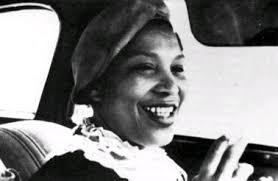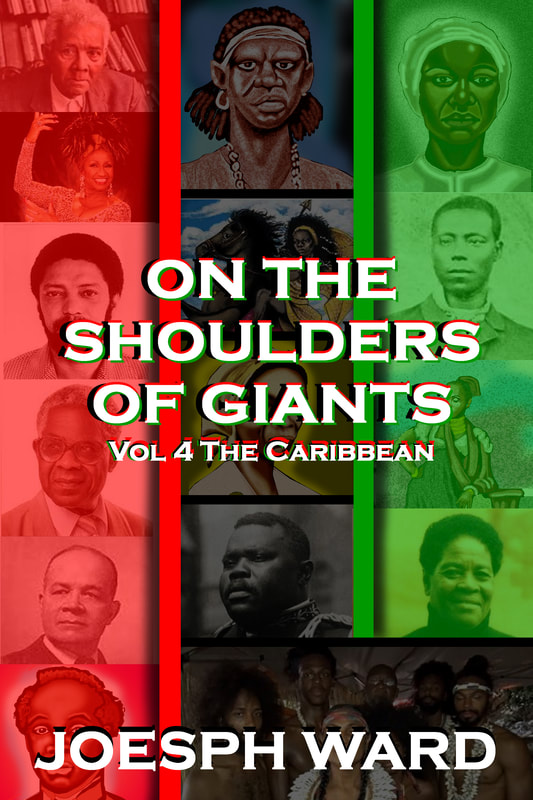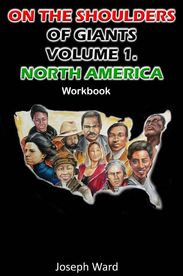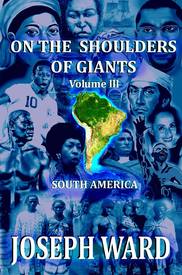|
January 7, 1891 in Notasulga, Alabama John and Lucy Ann Hurston gave birth to their fifth child Zora Neal Hurston. John and Lucy Ann were former slaves who went on to create a life for their family; John was a Preacher, carpenter, tenant farmer while Lucy Ann was a school teacher. While Hurston was a very young girl around the age of three her family moved to Eatonville, Florida, one of the first incorporated all-black towns within the United States. Hurston was known for declaring Eatonville as her place of birth because it captured a special place in her heart. This was a town where black excellence was on display at all times; even her father John Hurston even became Mayor of Eatonville around 1897. In 1901 Hurston was introduced to new types of literature as school teachers from the North visited Eatonville; this was the beginning of Zoran Neal Hurston becoming a literary giant. Her mother would die in 1904, shortly after her father remarried a woman named Matte Moge who Hurston was not very fond of. Zora and Moge engaged in a physical altercation, shortly after Hurston was sent to a Baptist boarding school in Jacksonville, Florida. While attending the boarding school Hurston’s parents could not afford to continue paying her tuition, she eventually left school to become a maid for the lead singer of the Gilbert & Sullivan traveling troupe. By 1917 Hurston was 26 years old and wanted to earn her high school diploma, she reduced her age by ten years and enrolled into the High School of Morgan State University. She earned her diploma within a year then attended Howard University; she was also one of the initial women to become a part of Zeta Phi Beta Sorority, Inc. As a student at Howard Hurston founded a school newspaper called the Hilltop, studied Greek, Spanish, English and public speaking. She would earn her associates degree in 1920 from Howard University, she then attending Barnard College at Columbia University in 1925 as the only black student. In 1921 Zora would be admitted into the Alaine Locke literary club, The Stylus after writing her short story titled John Redding Goes to Sea. In 1928 at the age of thirty seven Hurston completed her studies and earned a bachelor’s degree in Anthropology from Barnard College. During the Harlem Renaissance of the 1920’s Hurston found herself within the mix mingling with figures such as Langston Hughes, Ethel Waters, Countee Cullen and many more. She was the Southern woman in the big Northern city who attracted the giants of the Harlem Renaissance to her tiny apartment for laughs and friendship. She was also beginning to make a name for herself as a writer; she placed in a play-writing contest for Opportunity Magazine which helped her to gain notoriety. She was also publishing short-stories, articles and novels such as Jonah’s Gourd Vine and Mules and Men. In 1927 Hurston married Jazz musician turned physician Herbert Sheen, the couple divorced in 1931. She would marry a man named Albert Price in 1939 which only lasted seven months. She wrote literary masterpiece’s during the 1930’s and 40’s which included but are not limited to, Their Eyes Were Watching God, Jonah’s Gourd Vine, Tell My Horse, Moses, Man of the Mountain, and Dust Tracks on a Road. She lived in Westfield, New Jersey during the 1930’s but her community involvement was not limited to her state. She established School of Dramatic Arts at Bethune-Cookman College; the school was designed to be “based on pure negro expressions.” In 1942, she received critical acclaim for her writings and was profiled in publications such as Who’s Who in America, Current Biography and Twentieth Century Authors. Hurston added an additional masterpiece to her catalog in 1948 by writing the novel Seraph on the Suwanee. Hurston immersed herself in anthropological studies during college which helped her gain a sponsorship from a well-known anthropologist Charlotte Osgood Mason. Conducting these studies allowed her to travel the globe during the 1930’s, those travels profoundly impacted her writings. She was able to study the cultures of the Caribbean and South America which inspired her to write Jonah’s Gourd Vine in 1934 and Mules and Men in 1935. With funding from the Guggenheim Foundation Hurston traveled to Jamaica and Haiti on an anthropological mission but once again found inspiration for her writings; that inspiration lead to book Tell My Horse in 1938. Hurston spent her time in South America during the 1940’s living in Puerto Cortes, Honduras studying the diversity of the Miskito Zambu and Garifuna cultures; both cultures have their ancestral lineages in Africa. While in Puerto Cortes she would write Seraph on the Suwanee, a book based in the Suwanee regions of Central Florida. Before leaving Honduras Hurston was falsely accused of molesting a 10 year old boy, the accusation was found to be false but her reputation was tainted. 1952 was the year that Hurston was contacted by a man named Sam Nunn who was the editor of the Pittsburgh Courier, Nunn wanted Hurston to travel to Florida to report about Ruby McCollum who was accused of murdering a white doctor and politician. Ruby McCollum was a black woman who stated that the doctor forced her to have sex with him and bear his child. Hurston was familiar with these stories; she learned about white men forcing themselves on helpless black women under the “paramour rights.” The paramour rights gave the women who were preyed upon the status of a slave which also included sexual violence. Hurston and Nunn were determined to expose these inhumane conditions, but not without being met with resistance. Hurston next traveled to Live Oak, Florida to gain more evidence from the residence to help her story; little did she know the residents of the town were not willing to speak to her. Some residents were threatened and the others followed the code of silence. She eventually was able to gather information and published her articles but Ruby McCollum was convicted by an all-white jury of only men and sentenced to death. Her relationship with Nunn ended when they disagreed upon Hurston’s payments for her research. She later contacted a journalist named William Bradford Huie, she needed help to cover the appeal and second trail of Ruby McCulum. Huie agreed to help Hurston but Huie covered the story himself. He used the information he collected and the data Hurston collected to write the bestselling book Ruby McCollum: Woman in the Suwannee Jail. One major problem with the success of the book is Hurston was barley acknowledge for the information she provided Huie. Even though Hurston did not receive the credit she deserved she was happy the book helped to end the “paramour rights.” Hurston was awarded the Bethune- Cookman College Award for Higher Education and Human Relations in 1956. The English department of Bethune-Cookman College used its resources to preserve the legacy of Zora Neal Hurston in honor of her achievements. Later in 1956 she served as a faculty member of the North Carolina College for Negros. In 1957 Hurston was fired from her job at the Pan American World Airways Technical Library at Patrick Air Force Base because she was too educated for a black person. She would move to Fort Pierce, Florida later in life looking for work to sustain herself, she worked as a substitute teacher before turning to public assistance. Despite all of the literary contributions Hurston made she never received the financial compensations she deserved. January 28, 1960 Zora Neal Hurston died of a stroke but helped to lay the groundwork for other African American authors such as Alice Walker to follow her. Hurston was a woman who learned to use her experiences, intelligence and creativity to turn the American literary world on its head. Zora Neal Hurston, we proudly stand on your shoulders. J.A. Ward References:
http://www.zoranealehurston.com/about/index.html https://en.wikipedia.org/wiki/Zora_Neale_Hurston http://www.famousscientists.org/zora-neale-hurston/ https://chdr.cah.ucf.edu/hurstonarchive/?p=hurstons-life
0 Comments
Leave a Reply. |
Details
Categories
All
Click Here to join our mailing list
|
Contact Us: |
Connect With Us |
Site powered by PIT Web Design


 RSS Feed
RSS Feed



